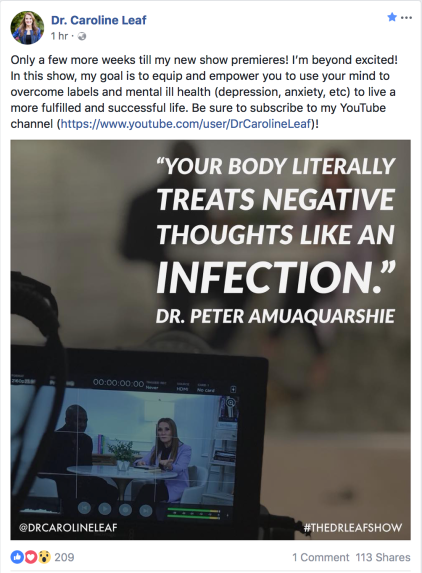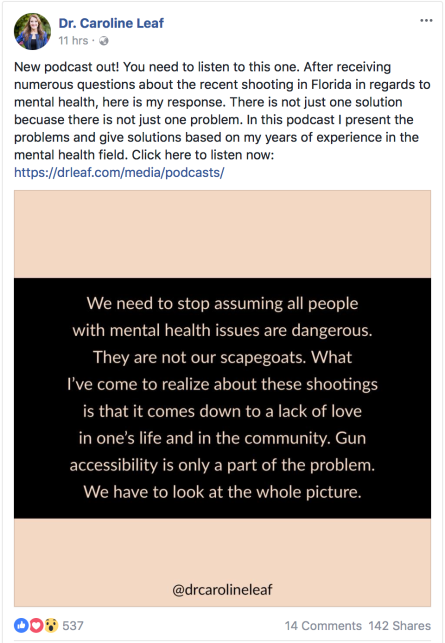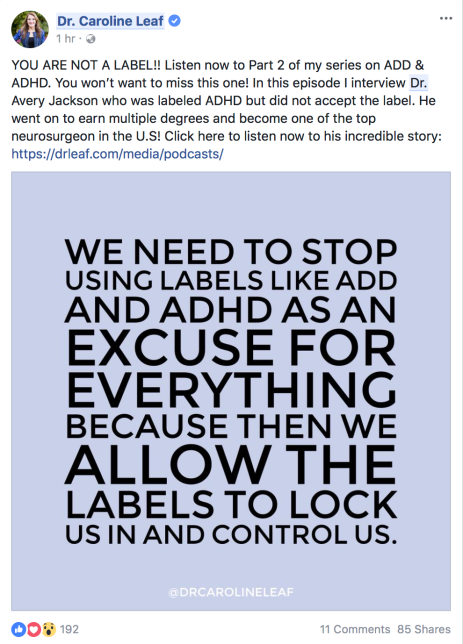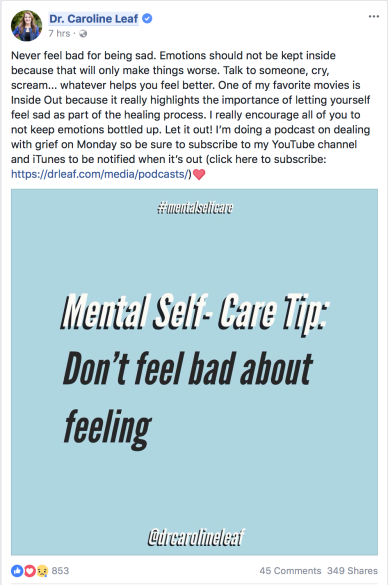Happy Easter everyone.
I went to church this morning, and came home to get a lamb ragu going in the slow cooker, and thought I would just hop onto Facebook to see what was going on in the world. I was greeted with this:
“Your body literally treats negative thoughts like an infection.” Dr Peter Amuaquarshie
Oh dear … oh dear, oh dear, oh dear …
Easter is meant to be about redemption, about hope, about God’s great love for us. Clearly #TheDrLeafShow isn’t any of that.
Unfortunately, this is more pseudoscience from Dr Leaf and her cabal. And while it might also be April Fools Day, fake science is no joke.
Dr Peter Amua-Quarshie has been in cahoots with Dr Leaf since the beginning of her teaching. He has supplied most of the illustrations for Dr Leaf’s ministry over the years, so I’m sure he’s profiting handsomely from Dr Leaf’s enormous sales and influence.
It’s so sad to see academics trade their integrity and sell their soul for the sake of the ill-gotten gains of popular pseudoscience.
Your body doesn’t “literally” treat negative thoughts like an infection. Our thoughts have literally no bearing on our immune function. In research work that has intentionally studied thought separately to stress, thought has not been associated with any significant changes in stress or health behaviour [1]. It’s also been confirmed that thought alone does not lead to detrimental biological changes, such as significant changes in immune function [2].
If anything, it’s the other way around – our immune system and our thoughts respond to physical changes in our bodies internal milieu. For example, an adrenaline surge causes us to feel fear and engage in fight or flight behaviours, and to respond quickly to injury, the balance of our immune system’s cells and cytokines changes to prepare for possible injury.
Another example, a physical infection from a microbe of some kind (bacterial or virus) causes a flood of chemical mediators called cytokines to float around the blood stream. This inflammatory response leads to an immune system that is better able to fight off infection, but it also changes our feelings and our thoughts – this flood of cytokines is the reason why we feel tired, achey and miserable when we’re sick.
Having “negative thoughts” is not the same as having an infection. Infections are disease states, whereas “negative thoughts” are normal and more often than not, beneficial. It’s normal to feel sad. It’s normal to feel angry. It’s normal to feel disgusted or embarrassed. These feelings are adaptive. Without them, we wouldn’t grow or change. Without them, we couldn’t have a rich, full life.
Dr Leaf claims that her goal is to “equip and empower you to use your mind to overcome labels and mental ill health (depression, anxiety, etc) to live a more fulfilled and successful life.” It’s a bit hard to do that by promoting fake science.
For his part, Amua-Quarshie should know better. He’s a teaching academic by trade and has a medical degree from the University of Ghana, after all. Unfortunately, it appears that Dr Amua-Quarshie has been exiled from mainstream academia, leaving a full-time position as an Adjunct Professor (lecturer) at the University of Wisconsin-Stout in Menomonie, Wisconsin and is now working as a lecturer in a school for chiropractors (Parker University, Dallas, Texas).
Though that’s more of an aside. The bottom line here is that Dr Leaf might claim that she wants people to overcome ‘labels and mental ill health’ but she isn’t going to do that by promoting such obvious mistruths that mislead people into fearing normal, adaptive human emotions. She isn’t promoting a more fulfilled and successful life, she’s promoting imbalance. She’s promoting false hope.
I know it’s April Fools, but believe me, this is no joke. Fake science is misleading and harmful. If Dr Leaf really wants people to live a more fulfilled and successful life, she should refrain from using it.
References
1. Doom, J.R. and Haeffel, G.J., Teasing apart the effects of cognition, stress, and depression on health. Am J Health Behav, 2013. 37(5): 610-9 doi: 10.5993/AJHB.37.5.4
2. Segerstrom, S.C. and Miller, G.E., Psychological stress and the human immune system: a meta-analytic study of 30 years of inquiry. Psychol Bull, 2004. 130(4): 601-30 doi: 10.1037/0033-2909.130.4.601











